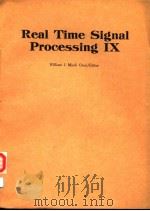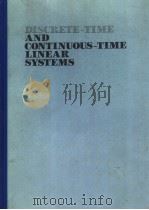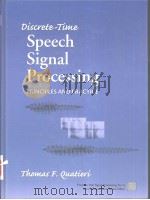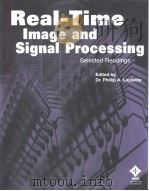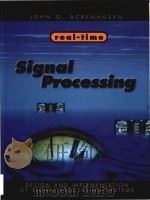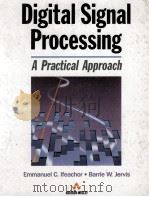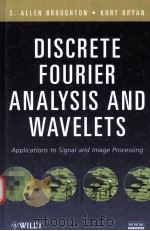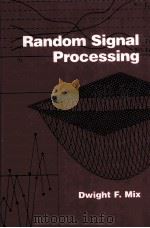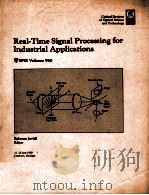《Discrete-time signal processing》
| 作者 | Alan V. Oppenheim ; Ronald W. 编者 |
|---|---|
| 出版 | Prentice Hall |
| 参考页数 | 880 |
| 出版时间 | 1989(求助前请核对) 目录预览 |
| ISBN号 | 无 — 求助条款 |
| PDF编号 | 813964798(仅供预览,未存储实际文件) |
| 求助格式 | 扫描PDF(若分多册发行,每次仅能受理1册) |
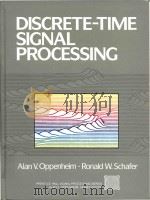
1Introduction1
2Discrete-Time Signals and Systems8
2.0 Introduction8
2.1 Discrete-Time Signals:Sequences9
2.2 Discrete-Time Systems17
2.3 Linear Time-Invariant Systems21
2.4 Properties of Linear Time-Invariant Systems27
2.5 Linear Constant-Coefficient Difference Equations33
2.6 Frequency-Domain Representation of Discrete-Time Signals and Systems39
2.7 Representation of Sequences by Fourier Transforms45
2.8 Symmetry Properties of the Fourier Transform52
2.9 Fourier Transform Theorems56
2.10 Discrete-Time Random Signals63
2.11 Summary67
Problems68
3Sampling of Continuous-Time Signals80
3.0 Introduction80
3.1 Periodic Sampling80
3.2 Frequency-Domain Representation of Sampling82
3.3 Reconstruction of a Bandlimited Signal from Its Samples87
3.4 Discrete-Time Processing of Continuous-Time Signals91
3.5 Continuous-Time Processing of Discrete-Time Signals99
3.6 Changing the Sampling Rate Using Discrete-Time Processing101
3.7 Practical Considerations112
3.8 Summary130
Problems131
4The z-Transform149
4.0 Introduction149
4.1 The z-Transform149
4.2 Properties of the Region of Convergence for the z-Transform160
4.3 The Inverse z-Transform165
4.4 z-Transform Properties172
4.5 The Inverse z-Transform Using Contour Integration181
4.6 The Complex Convolution Theorem184
4.7 Parseval’s Relation186
4.8 The Unilateral z-Transform188
4.9 Summary191
Problems192
5Transform Analysis of Linear Time-Invariant Systems202
5.0 Introduction202
5.1 The Frequency Response of LTI Systems203
5.2 System Functions for Systems Characterized by Linear Constant-Coefficient Difference Equations206
5.3 Frequency Response for Rational System Functions213
5.4 Relationship Between Magnitude and Phase230
5.5 Allpass Systems234
5.6 Minimum-Phase Systems240
5.7 Linear Systems with Generalized Linear Phase250
5.8 Summary270
Problems270
6Structures for Discrete-Time Systems290
6.0 Introduction290
6.1 Block Diagram Representation of Linear Constant-Coefficient Difference Equations291
6.2 Signal Flow Graph Representation of Linear Constant-Coefficient Difference Equations297
6.3 Basic Structures for IIR Systems300
6.4 Transposed Forms309
6.5 Basic Network Structures for FIR Systems313
6.6 Lattice Structures317
6.7 Overview of Finite-Precision Numerical Effects328
6.8 The Effects of Coefficient Quantization335
6.9 Effects of Roundoff Noise in Digital Filters351
6.10 Zero-Input Limit Cycles in Fixed-Point Realizations of IIR Digital Filters373
6.11 Summary378
Problems379
7Filter Design Techniques403
7.0 Introduction403
7.1 Design of Discrete-Time IIR Filters from Continuous-Time Filters406
7.2 Frequency Transformations of Lowpass IIR Filters430
7.3 Computer-Aided Design of Discrete-Time IIR Filters438
7.4 Design of FIR Filters by Windowing444
7.5 Examples of FIR Filter Design by the Kaiser Window Method458
7.6 Optimum Approximations of FIR Filters464
7.7 Examples of FIR Equiripple Approximation481
7.8 Comments on IIR and FIR Digital Filters488
7.9 Summary489
Problems490
8The Discrete Fourier Transform514
8.0 Introduction514
8.1 Representation of Periodic Sequences:The Discrete Fourier Series515
8.2 Properties of the Discrete Fourier Series520
8.3 Summary of Properties of the DFS Representation of Periodic Sequences525
8.4 The Fourier Transform of Periodic Signals526
8.5 Sampling the Fourier Transform527
8.6 Fourier Representation of Finite-Duration Sequences:The Discrete Fourier Transform530
8.7 Properties of the Discrete Fourier Transform535
8.8 Summary of Properties of the Discrete Fourier Transform547
8.9 Linear Convolution Using the Discrete Fourier Transform548
8.10 Summary560
Problems561
9Computation of the Discrete Fourier Transform581
9.0 Introduction581
9.1 Efficient Computation of the Discrete Fourier Transform582
9.2 The Goertzel Algorithm585
9.3 Decimation-in-Time FFT Algorithms587
9.4 Decimation-in-Frequency FFT Algorithms599
9.5 Implementation of FFT Algorithms605
9.6 FFT Algorithms for Composite N610
9.7 Implementation of the DFT Using Convolution622
9.8 Effects of Finite Register Length in Discrete Fourier Transform Computations628
9.9 Summary641
Problems642
10Discrete Hilbert Transforms662
10.0 Introduction662
10.1 Real and Imaginary Part Sufficiency of the Fourier Transform for Causal Sequences664
10.2 Sufficiency Theorems for Finite-Length Sequences670
10.3 Relationships Between Magnitude and Phase674
10.4 Hilbert Transform Relations for Complex Sequences676
10.5 Summary689
Problems689
11Fourier Analysis of Signals Using the Discrete Fourier Transform695
11.0 Introduction695
11.1 Fourier Analysis of Signals Using the DFT696
11.2 DFT Analysis of Sinusoidal Signals699
11.3 The Time-Dependent Fourier Transform713
11.4 Block Convolution Using the Time-Dependent Fourier Transform721
11.5 Fourier Analysis of Nonstationary Signals723
11.6 Fourier Analysis of Stationary Random Signals:The Periodogram730
11.7 Spectrum Analysis of Random Signals Using Estimates of the Autocorrelation Sequence742
11.8 Summary755
Problems756
12Cepstrum Analysis and Homomorphic Deconvolution768
12.0 Introduction768
12.1 Definition of the Complex Cepstrum769
12.2 Homomorphic Deconvolution771
12.3 Properties of the Complex Logarithm775
12.4 Alternative Expressions for the Complex Cepstrum778
12.5 The Complex Cepstrum of Exponential Sequences779
12.6 Minimum-Phase and Maximum-Phase Sequences781
12.7 Realizations of the Characteristic System D*[·]787
12.8 Examples of Homomorphic Filtering797
12.9 Applications to Speech Processing815
12.10 Summary825
Problems826
Appendix ARandom Signals835
A.1 Discrete-Time Random Processes835
A.2 Averages837
A.3 Properties of Correlation and Covariance Sequences841
A.4 Transform Representations of Random Signals843
Appendix BContinuous-Time Filters845
B.1 Butterworth Lowpass Filters845
B.2 Chebyshev Filters847
B.3 Elliptic Filters849
Bibliography851
Index869
1989《Discrete-time signal processing》由于是年代较久的资料都绝版了,几乎不可能购买到实物。如果大家为了学习确实需要,可向博主求助其电子版PDF文件(由Alan V. Oppenheim ; Ronald W. 1989 Prentice Hall 出版的版本) 。对合法合规的求助,我会当即受理并将下载地址发送给你。
高度相关资料
-
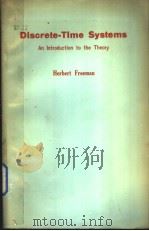
- DISCRETE-TIME SYSTEMS
- JOHN WILEY & SONS INC
-
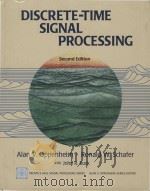
- Discrete-time signal processing (Second Edition)
- 1999 Prentice Hall
提示:百度云已更名为百度网盘(百度盘),天翼云盘、微盘下载地址……暂未提供。➥ PDF文字可复制化或转WORD
